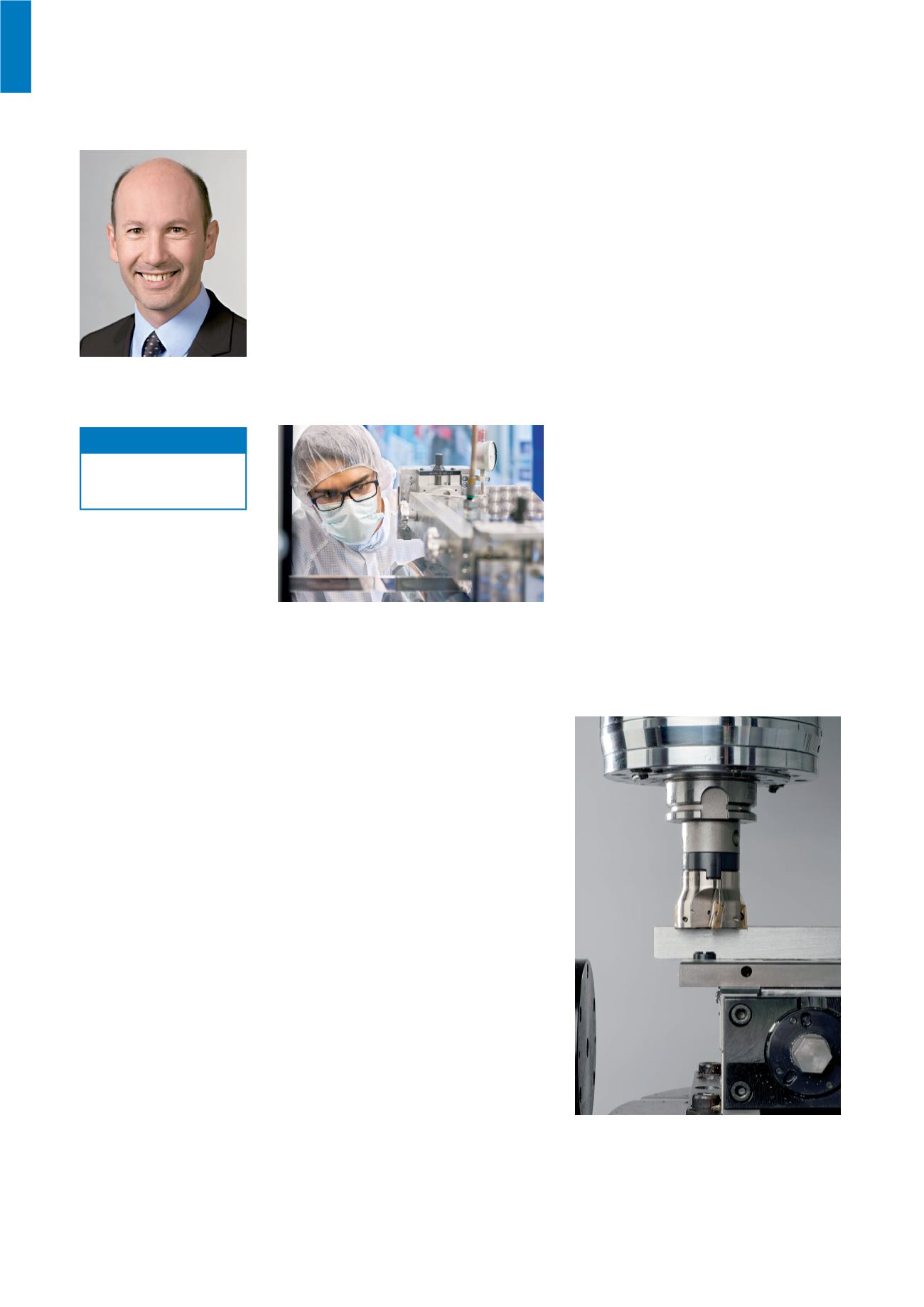

324
Machine Tools and Manufacturing Technology
Machine Tools and Manufacturing Technology
Perspectives for production
Prof. Dr.-Ing.
Michael F. Zaeh
Machine Tools
In the context of the Machine Tools
working group, we analyze and optimize
cutting production systems. The studies
focus on the examination of dynamic
machine behavior, the cutting process
and influencial thermal factors. Thanks
to the consideration of aspects of instru-
mentation and control, the study horizon
is expanded beyond purely mechanical
structures to complex mechatronic sys-
tems. Modern simulation methods, such
as the finite elements and multiple-body
simulation, are used for these exami-
nations in order to reflect the machine
features in detail. By coupling these with
developed cutting-force models, inter-
actions between structure and process
can be demonstrated. Furthermore,
energy-related aspects which interact with
the machine properties are in the focus of
the investigations. The energy efficiency of
machine tools is becoming more and more
a competitive factor.
n
In 2016, the focus of the Chair for Machine Tools and Production
Engineering was on the machining of materials and the processing thereof
into composite materials. With emphasis being placed on lightweight
design, new production processes were analyzed and further optimized
using suitable simulation models.
With regard to light-weight structures that
are optimally adapted to the respective
loads, bionic approaches such as the
adaptation of natural honeycomb and grid
structures have proven to be particularly
suitable for achieving the desired goals in
the area of additive production processes.
With the objective to use the suitable
material in any location, the research
acivities are focusing on the area of joining
and separating cutting technologies are
focusing on producing joints of different
dissimilar metals or metal to plastics that
so far could not be produced. Thermal
simulation models of joining processes
have proven their particular potential,
which allow the development of innovative
production processes e.g. in the produc-
tion of lithium-ion cells.
For the last past 21 years, the Application
Center Augsburg has transferred the new
production technologies to industrial
production, from which mainly small and
medium-sized companies in the Bavarian-
Swabian region benefit.
www.iwb.mw.tum.de info@iwb.tum.dePhone +49.89.289.15500
Contact
Test of milling in the context of the new learning
factory for optimal cutting
Monitoring the process for coating anodes


















